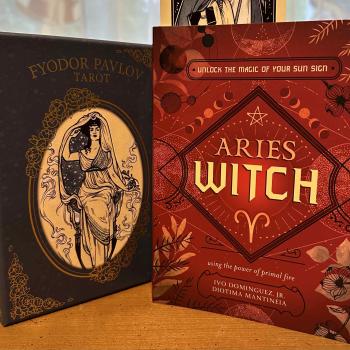When I first started burning incense as a teenager, I used incense sticks, cones, and matches. I liked them alright, but what I really wanted was a pure experience with a plant.
Enter the incense bowl.

The incense bowl is a safe way to burn dried plants. It eliminates some of the need to buy incense, and it keeps artificial fragrances at bay. Burning herbs this way ensures you’re getting the real thing with no fillers or fragrances. It’s my favorite way to burn incense.
I don’t see this method espoused very often. It has become a foundational part of my air magic, so I wanted to share my techniques with you.
1. Choose a Bowl
I use a metal bowl for burning dried herbs, but a ceramic one could be used as well. Basically, you want to avoid anything that can be damaged by fire, such as glass or plastic.
I found this gorgeous antique metal bowl (below) in a thrift store for a dollar or two, and it works perfectly. It has a metal base so the bottom of the bowl isn’t touching the table or anything that could be damaged. If your bowl doesn’t have a base, use a coaster or a heat-safe mat beneath the bowl.
Something to consider–I like the scorch marks that the burning plant matter leaves in the incense bowl, but if you prefer a cleaner-looking bowl, use a layer of sand in the bottom to absorb the heat. Change out the sand whenever it gets too dusty.

2. Choose a Dried Herb
Which herb would be best for your magical purposes? It’s time to get out your correspondence book or look it up online. My newest book, Air Magic, lists the correspondences of all kinds of herbs as well as essential oils and resins.
Some of my favorite herbs to use with the incense bowl are lavender, mint, rosemary, garden sage, parsley, and catnip. I also wild harvest a few herbs–with respect, and leaving enough for wildlife, of course. Even something as common as dandelion leaves can produce an interesting herbal aroma.
A note of caution–don’t burn anything poisonous. For example, foxglove is a beautiful and witchy plant, but it’s toxic. Burning it might cause breathing issues and extreme harm to you, your housemates, and your pets. Look up the herb online and do your best to identify it. When in doubt, don’t burn it.
In this video, I’m using an incense bowl to burn a few lavender sprigs, which I separated from a bundle.
3. Location, Location
Place your incense bowl on your altar or in a safe place. Ideally, nothing will fall into the bowl or move over it, like a curtain. You’re working with fire, so it’s best to be cautious.
As with all incense, I advocate not using the bowl near any pet birds, as they are highly sensitive to smoke. Other pets can be allergic to smoke too, so avoid using it near other pet-common places such as areas where they sleep or eat.
4. Connect, Light, and Drop
Connect with the energy of the unlit herb. When you’re ready, use a lighter to light the herb on fire over the bowl. Let it burn for a few seconds, and then drop it or set it in the incense bowl before the heat reaches your fingers. Usually, the embers will stay lit for a while, as you can see in the photo below.
5. Waft the Smoke and Enjoy
Use your hands to waft the smoke up from the incense bowl. This keeps the air circulating, and it makes the embers burn for a little longer. The ashes will fall into the bowl.

How long the herbs burn depends on what kind of herb you use, how dry it is, how effective your wafting skills are, and how much oils it has naturally. I’ve used an incense bowl to cleanse my entire house with several kinds of herbs without having to relight them. Experiment to see what works for you.
6. Let The Incense Go Out Naturally
Stay with the incense until it goes out naturally. You can burn the herb again when it no longer smokes if you’d like.
When you are completely finished, be sure that you don’t throw out the herb or the ashes until the plant matter is completely extinguished. You may need to run the herb under water or let it sit for a few minutes until there’s no smoke.
7. Think About Next Time
Aromas affect us on a very primal level. The olfactory bulb in the human brain brings up our own memories and our ancestral memories as well. You may want to ask yourself what your ancestors might have burned? You can use those plants to get in touch with them.
8. Why Not Dry Your Own Herbs?
I grow a lot my incense herbs myself. After harvesting them, I tie them together with a twist tie at the base, and I hang them upside down from a wire for a few days. The twist tie might have to be tightened after a couple of days.
You could also create a bundle of multiple herbs and use the bundle in this matter too. A dehydrator is a great option to avoid anything rotting.

Air Magic is out! It’s my second book with Llewellyn and the second book in the Elements of Witchcraft Series. Writing this book was an adventure, and several times, I felt as if I were taking off into the magical element of air.
Look for Air Magic at stores, or order it at any number of fine bookshops. I also have signed copies available at my website at www.astreataylor.com/bookshop.
















